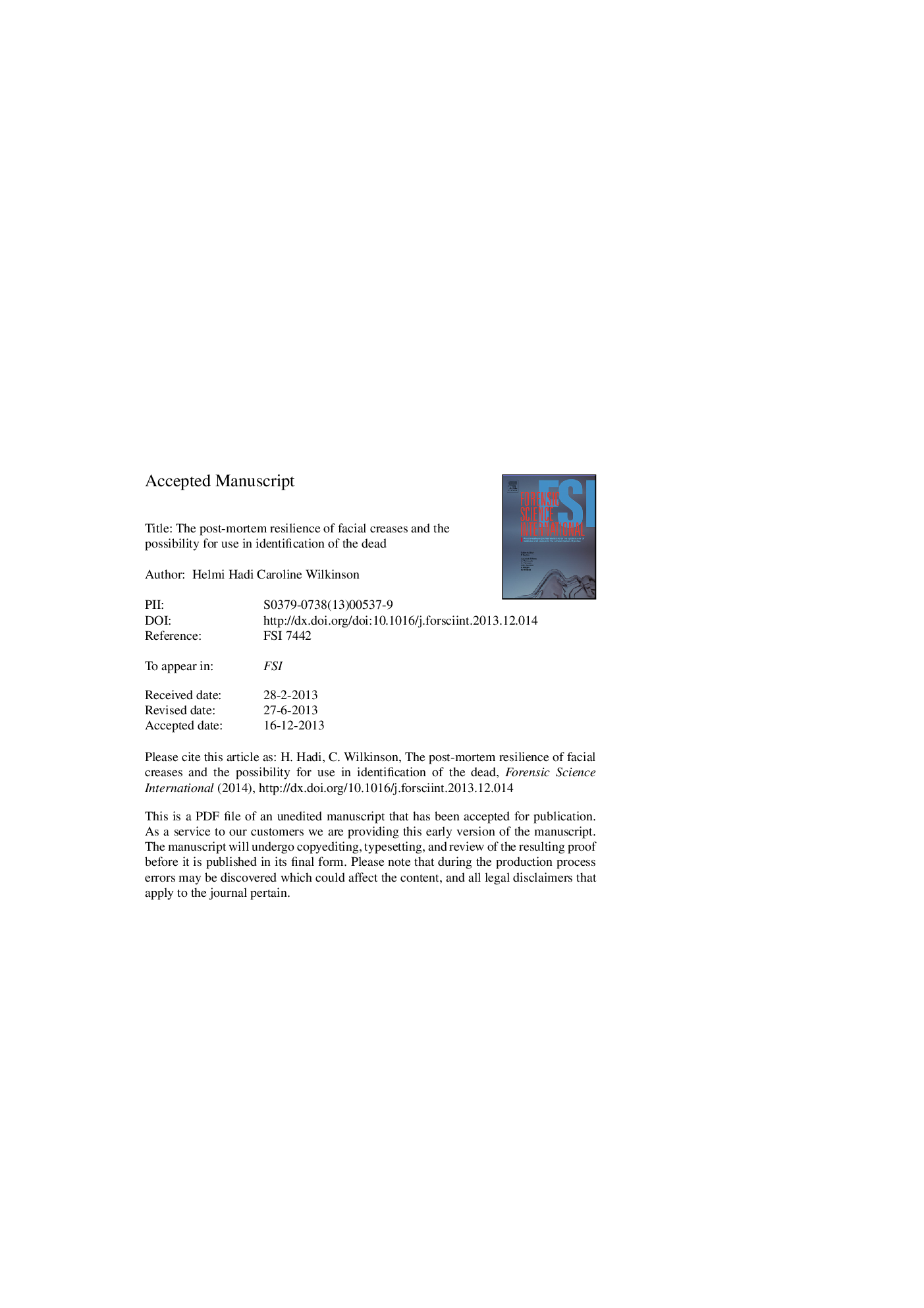| Article ID | Journal | Published Year | Pages | File Type |
|---|---|---|---|---|
| 95798 | Forensic Science International | 2014 | 22 Pages |
Abstract
The post-mortem resilience of facial creases was studied using donated bodies in order to establish the efficacy of crease analysis for identification of the dead. Creases were studied on normal (pre-embalmed) and bloated (embalmed) cadavers at the Centre for Anatomy and Human Identification (CAHID) to establish whether facial bloating would affect facial crease visibility. Embalming was chosen to simulate the effects produced by post-mortem bloating. The results suggested that creases are resilient and changes were only detected for creases located on the periphery of the face, particularly at areas where the skin is thick, such as at the cheeks. Two new creases not previously classified were identified; these creases were called the vertical superciliary arch line and the lateral nose crease. This research suggests that facial creases may be resilient enough after death to be utilised for human identification.
Related Topics
Physical Sciences and Engineering
Chemistry
Analytical Chemistry
Authors
Helmi Hadi, Caroline M. Wilkinson,
